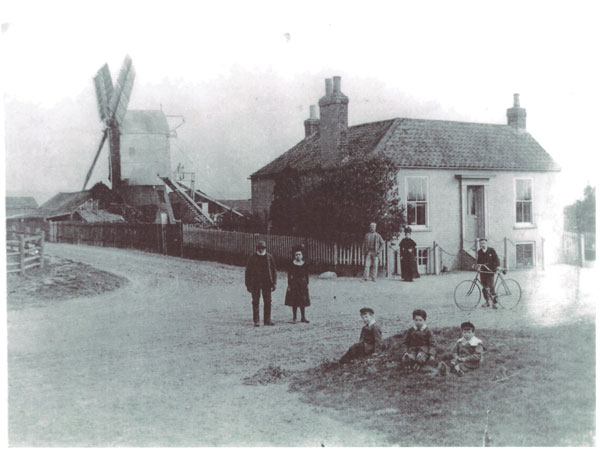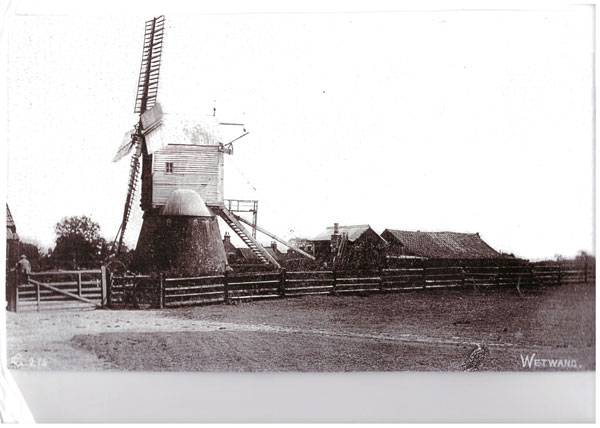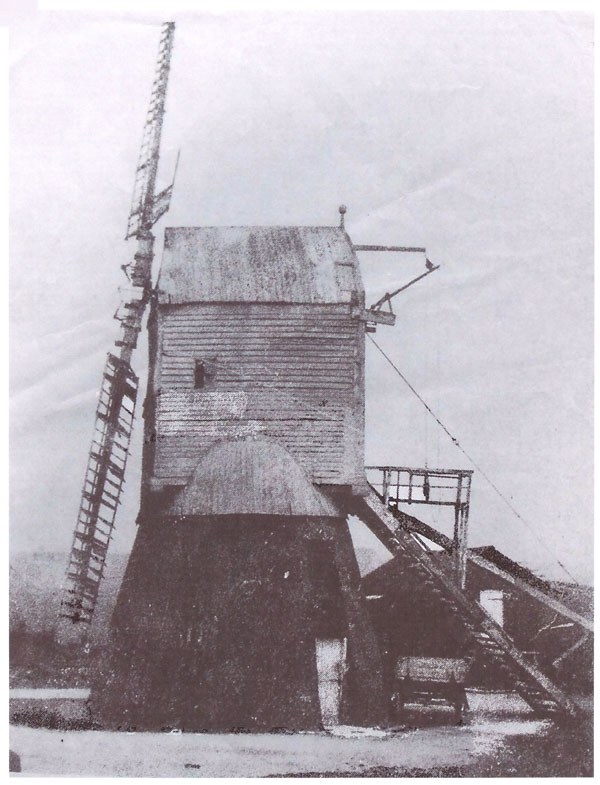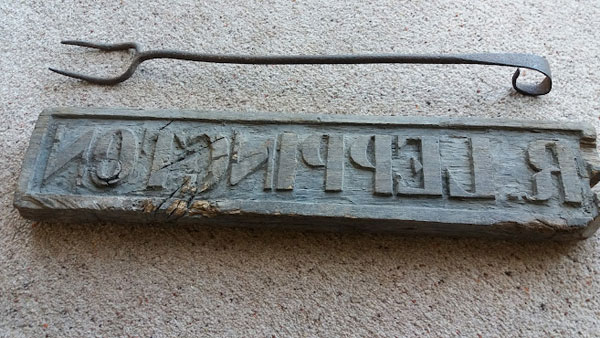01262 375415 | bookings@thegranarywetwang.co.uk

01262 375415 | bookings@thegranarywetwang.co.uk

Wetwang windmill was situated to the NW of the village on Northfield Road. It was a post mill with a timber framed body containing the gearing and millstone mounted on a massive vertical post. A horizontal crossbeam known as the crown tree, together with four quaterbars carried the weight.
The body turned on the head of the post. The sails rotated almost vertically and were fixed to a timber axle called a windshaft. The body of the mill could be rotated 360 degrees in order to face sails squarely to the wind.
A ladder was used to access the working part of the mill. this acted as a stabiliser when the mill was at work. Improvements were made to early post mills by building a roundhouse around the crosstrees and quarterbar structure this protected the structure from the weather and created additional storage space.
The windmill was demolished in 1979, but the original Granary remains as a holiday let. It still contains the original lifting hoist.
It remained a post mill throughout the 18th century. During this time it was fashionable to replace the older post mills with brick tower mills, but this didn't happen in Wetwang.
The mill has an unusual stricking rod mechanism, which was needed to open and close the shutters on the sails. Usually this was controlled bu a rack and pinion movement but at Wetwang a rocking lever was fitted.
The windmill had a rear platform to give access to the stricking chain, which was probably added when patent sails were bought into use. This arrangement was
considered to be innovation
in the latest type of 19th century gearing though more common on the 19th century tower mills.
One of the old millstones can be seen in the mill garden. This is probably a French stone comprised of hard quartzite. Many of these stones were quarried at La Ferte sous Jouarre near Paris.
The stone could not be quarried in one piece and pieces of stone were cemented together and set in plaster of Paris bound by a metal hoop. They were popular in the early 19th century, as they were better for producing flour rather than grinding cattle feed. The French stones measured between 4ft to 4ft 6in.
Situated on the main road, the miller's house has been set down below the surface of the current road. This enabled the wind unrestrained access to the sails of the mill.
The 1905 O.S. map records that Robert Leppington was the miller of a wind and steam powered mill. He was also a farmer.
J.R.Mortimer writes in his boyhood recollections that bread was very coarse and inferior.
The owners of Sledmere, Fridaythorpe and Huggate mills called at farmhouses once a week to collect wheat to grind into flour and returned with the meal the following week, (after having taken a portion to grind for themselves as payment-Mouter).
This was sometimes returned as undressed meal, which the housewife had to dress by putting it through a hair sieve called a temse. If brown bread was required a wider sieve was used and only the coarse bran removed, but if white flour was needed for pastry, it was put through a closer meshed sieve.
The quality of the bread was inferior especially after a sprouted harvest, but was as improvement to bread made from barley, which was grown before wheat was locally grown.




Prior to 1817: Michael Newlove, John Newlove, Richard Binnington, Matthew Welburn, Marmaduke Welburn.
30th December 1817: Mary Tranmer, George Stabler the younger.
26th October 1847: Samuel Wheatcroft, Elizabeth Wheatcroft, Eliza Wheatcroft.
15th January 1848: Ann Thompson (Died 10th September 1873).
12th March 1874: Mr Thomas Thompson.
9th March 1893: Samuel Wheatcroft sells to Robert Leppington.
18th July 1896: Robert Leppington to Eliza Wheatcroft.
10th December 1927: Wheatcroft's Rep to Annie Elizabeth Leppington.